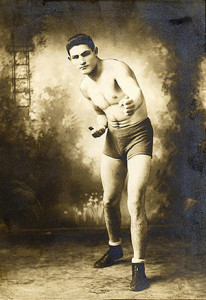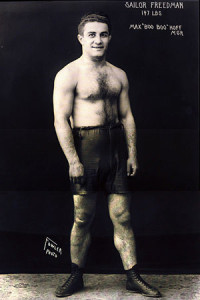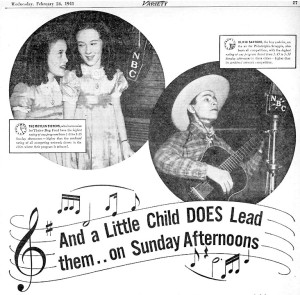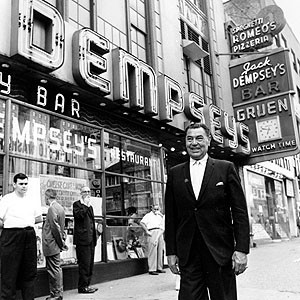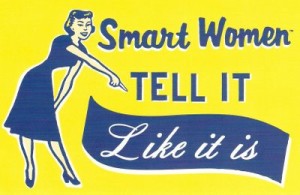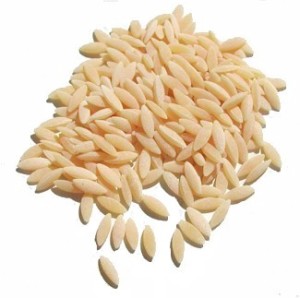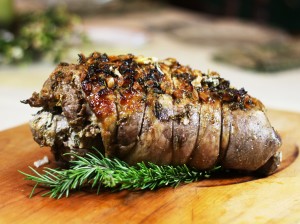In HG’s Bronx youth basketball ruled. Sure, there were plenty of softball games, rough and tough sandlot football battles, bleacher seats at Yankee Stadium (to watch the Yanks) and at the Polo Grounds (to watch the football Giants). But, the game that captured the hearts and minds of Bronx guys was basketball. Every Sunday, HG played three-man ball on the asphalt courts of Public School 86 (on Reservoir Avenue) or the Williamsbridge Oval (near Mosholu Parkway). Winning threesome kept the court. Losers left and another trio took their place. First team to score 16 points won. HG was no star. Just a very competitive and fearless journeyman. After games were over, the hungry young men shared huge, greasy pizzas at Joe’s Pizzeria on Jerome Avenue or numerous hot dogs with sauerkraut and mustard at nearby delicatessens. Saturday night was reserved for college games at Madison Square Garden. St. John’s, N.Y.U., C.C.N.Y., Manhattan, L.I.U. all had powerhouse teams and legions of manic fans. Apres game it was off to the Blue Ribbon, a German restaurant, for huge apple pancakes and beer. Currently, HG is watching the NBA playoffs. The players, in HG’s opinion, are the greatest athletes in the world. They combine size, strength, coordination, speed, grace, endurance and a fiery will to win. In recent days HG has seen ferocious, brilliant games culminating in last second heroics by Derrick Rose, Chris Paul, Paul Pierce and Lebron James. Yes, Europeans call soccer “the beautiful game” and Canadians are nuts about hockey…Fuhgeddabout it!! The game that’s got everything is NBA play-off hoops. And, depleted after vigorous TV watching, HG sits down to sumptuous eats prepared by BSK. Beats the hell out of pizza and hot dogs.
Hoops Magic
May 15th, 2015 § 0 comments § permalink
Soldier VS Sailor
May 13th, 2015 § 3 comments § permalink
Okay. This is the last of HG’s ruminations about old (mainly Jewish) prize fighters. HG has been fascinated by the fighting names of two battlers (they fought as welterweights and middleweights) Soldier Bartfield and Sailor Friedman. Soldier (1892-1970) was born Jakob Bartdfeldt in Hungary. He grew up in Brooklyn and was one of the busiest (some 220 fights between 1911-1932) and toughest fighters of his era. Soldier fought the best including champions Ted “Kid” Lewis (6 times), Mickey Walker (3 times), Benny Leonard, Jack Britton (7 times), Harry Greb (3 times). Soldier beat Lewis once, Britton once and Greb once. Soldier’s nephew was the very good Brooklyn middleweight, Danny Bartfield. During a comparatively short career (1940-1948),he had a record of 41 wins and five losses. (An aside: Britton was Ernest Hemingway’s favorite fighter and is a prototype for Hemingway’s fictional portraits of fighters. Britton fought Ted ‘Kid” Lewis the great Jewish welterweight from London’s East End, some 20 times. Each was a close bout and the welterweight championship shifted between them.) Soldier got his military name from three years of US Army service in Texas (presumably chasing Pancho Villa). Sailor Friedman (1899-1968) was born William Friedman in Chicago, ran away from home at the age of 14, settled in South Philadelphia. Sailor got his nautical name from three years (1915-1918) service aboard a US Navy battleship. He moonlighted from the ship to have his first professional fight in 1916. During his career (1916-1928) he had 119 fights (winning about half). Highlights were a losing battle with Mickey Walker for the welterweight title and two losing efforts against another Philadelphia fighter, Lew Tendler. Sailor was not an exemplary citizen. His manager was Max (Boo Boo) Hoff, Philadelphia gangland boss, bootlegger, gambling house operator . Sailor worked in various Hoff gambling enterprises and was one of his bodyguards. Sailor was charged with a Chicago murder in 1922 (killing of an illicit booze transporter). Convicted but exonerated. In 1923, on the eve of a Milwaukee fight, Friedman was beaten bloody by three assailants and left senseless. Cops linked it to a Chicago gangland dispute. In 1928, Friedman was arrested for assault but released. Surprisingly, Sailor had a streak of patriotism (or a desire to leave troubling circumstances in Philadelphia). In 1942, at the age of 43, he re-enlisted in the wartime US Navy. Record books reveal another Sailor Friedman who fought in New Orleans five times. There was also a Sailor Freeman (no relation of HG) who had one fight. And, there was also an obscure Soldier Freeman (no relation). Go figure.
Mother’s Day
May 11th, 2015 § 2 comments § permalink
HG has always had divided emotions about Mother’s Day. It is an obvious attempt by retailers to hype a very human emotion–love of one’s mother. On the other hand, it feels good to honor Mom. After all (with some help from Dad) she made you. For better or worse. When HG was a little fellow, Sunday afternoons were fouled by a radio program: “The Horn & Hardart Children’s Hour.” H & H, of course, was a chain of “Automats” where you put nickels in a slot and pulled out inexpensive, remarkably good food (Macaroni and cheese casseroles, Boston baked beans topped with crisp bacon; chicken pot pies and beef pot pies were mouth watering treats). Inexpensive, tasty food–much appreciated during the Great Depression. Anyway. On Sundays, talented little kids sang, played musical instruments and did dramatic recitations on the H & H radio program. HG’s Mom, who lacked some psychological sensitivity, would turn to little HG after some virtuoso performance, and say: “See what he can do. He’s your age. What can you do?” Tough skinned little HG managed to survive with some modest psychic scars. The theme song of the program was a saccharine melody: “Less work for Mother. She’ll understand.” The blunt message: Take Mom to the Automat or buy dinner at an H & H retail store. Save the sweet lady some work. The melody danced in HG’s head as this Mother’s Day rolled around. No work for BSK this Sunday. HG managed to save some excellent cooked linguine from a dinner earlier in the week. Mixed with beaten eggs, formed into patties and fried to a crisp in hot canola oil and butter this riff on fritattas was a treat. A dusting of salt and pepper plus Parmesan. Lots of cafe latte. The Sunday Times. The perfect breakfast for BSK. There were also some cards and delightful, modest gifts from HG, thoughtful Gorgeous Granddaughter Sofia R. and Toby,The Wonder Dog. Happy BSK. For dinner, HG and Sofia laid out an antipasto of sliced mozzarella and tomatoes adorned with basil leaves; superior Porchetta and Prosciutto di Parma; a salad of fennel and radishes (BSK could not be restrained from making this taste treat). Three Spanish cheeses. Meal ended with mushroom ravioli with a sauce of melted butter, sage leaves and Parmesan. Limoncello and Grappa. Almost no work for Mother and a happy day for deserving BSK.
Fighter Eateries
May 10th, 2015 § 5 comments § permalink
Recent post on the great heavyweight champ Joe Louis and the New York night club he fronted (Park Avenue Club), has made HG recall the various bars and restaurants of HG’s youth that were named after fighters (the battlers either acted as greeters or were part owners). The most famous was Jack Dempsey’s on Broadway (between 49th and 50th). Really good food. The steaks were outstanding. The ex-heavyweight champ was always on hand, greeting customers and handing out autographed photos. It had a long run (1935-1974) and was professionally managed by co-owner Jack Amiel (He owned the next door Turf Restaurant and his horse, the longshot Count Turf, won the 1951 Kentucky Derby). You can see the restaurant in the movie, “The Godfather.” The art directors did a superb job of reproducing the facade. A bit south on Broadway (1677A Broadway) was Abe Attell’s Cafe. This was more a bar than a full fledged restaurant (had just enough food on hand to satisfy the liquor authorities). Attell, nicknamed “The Little Hebrew”, was a great fighter (featherweight champ with 102 wins to his credit) and all-around scoundrel. He was indicted for aiding Arnold Rothstein in the scandalous “Black Sox” World Series fix but was found innocent by the jury. Big feature of the bar was a colored photo of Abe and opponent Harlem Tommy Murphy–both covered in blood. Abe’s bar was favored by heavy drinking bookmakers and gamblers. Few ate there. Abe himself favored Lindy’s Restaurant a few blocks away. (Broadway gag: “The food is so bad at Attell’s the rats go next door to eat.”) Abe grew up in an Irish neighborhood in San Francisco. Being Jewish, he had to fight in the streets every day. He recalled that he had ten fights in one day. The Attells were a fighting family. Brother Monte Attell, “The Nob Hill Terror,” was world bantamweight champ. First time two brothers were world champs at the same time. The third brother, Caesar, also fought professionally. Good. Not great. He was nicknamed “Two-and-a-half” because that’s what he always tossed in the hat for charitable causes. Further north on Broadway was Benny Leonard’s Cocktail Lounge (corner of 72nd Street). The lightweight champ’s place had a very brief life. Sugar Ray’s Restaurant on Seventh Avenue in Harlem had a longer run and served good food. A.J. Liebling, the eminent journalist who often wrote about boxing, reported that the big, tender pink pork chops he devoured there were mighty tasty. Middleweight champ Sugar Ray Robinson was a man of style. His colorful Cadillac convertible was often parked in front of the restaurant and was much admired. Henry “Hurricane Hank” Armstrong, one of the greatest fighters in history (he held the featherweight, lightweight, welterweight titles at the same time) also opened a Harlem restaurant, Melody Lounge. Bright lights and jazz music weren’t for Armstrong. He closed Melody Lounge and after retiring from boxing became a Baptist minister and youth counselor. Heavweight contender Tami Mauriello had a red sauce Italian restaurant, Tami’s Corner, in the Belmont section of The Bronx. HG recalls eating some splendid sausage and pepper sandwiches there. The best of the fighter associated restaurants was Lew Tendler’s Tavern in Philadelphia. Lew was an esteemed lightweight battler (More than 170 fights with only ten losses). Lew was considered to be the best fighter never to have won a championship and Philadelphia fight enthusiasts are still angry over the injustice. Tendler’s was a raucous, raffish place filled with gamblers, entertainers, Italian and Jewish gangsters. On nights of big fights it was the traditional gathering place of sports writers, HG ate there twice when HG was in Philly aiding in sports coverage. Like Tendler, the food was Jewish: Matzo ball soup. Chopped liver. Huge, garlic smothered tenderloin steaks. Like Sammy’s Romanian in New York but more restrained when it came to chicken fat. When a fight was on TV, gamblers gathered at the bar and wagered on every round. The gambling action was so frantic the sporting guys would forget to order drinks. The bartender, Lew’s son, would turn off the TV. “No money on the bar. No TV.” The bar was soon smothered in green. The New York bar favored by fighters and managers was the Neutral Corner on Eighth Avenue. The most mannerly and quiet bar HG ever frequented.
Fight Talk
May 8th, 2015 § 1 comment § permalink
HG paid scant attention to the over-hyped Mayweather-Pacquaio fight. HG had watched Mayweather battle on TV a few times. HG, a student of “the sweet science” (That’s what A.J. Leibling, the great New Yorker writer called boxing), thinks Floyd the best boxer of the modern era. No puncher, Floyd is a beautifully conditioned athlete who defeats his opponents with fast hands, ring intelligence and flawless footwork. Brilliant, but unexciting. Pacquaio is a busy little guy who is a persistent fighter without a knockout punch. Floyd won a unanimous decision (which is what HG predicted to BSK). Dull fight. Lovers of blood and thunder were disappointed. This made HG take a trip down memory lane and remember a dinner with Joe Louis, the great ex-heavyweight champ and Billy Graham, the very slick Irish welterweight from New York’s East 30’s neighborhood. The venue was the Park Avenue Club, a New York midtown night club fronted by Louis. (Moonlighting from his job as a journalist, HG was the press agent for Louis and the club). The time was the early 1950’s. Graham and Louis ate some thick steaks accompanied by French fries. HG sipped martinis and ate corned beef hash. Graham had just retired (He lost his last fight to Chico Vejar). Graham lamented the fact he never became world champion, losing some disputed fights to Kid Gavilan. Louis and Graham agreed that mob influence played a role in denying Billy the title. Graham was a good or better boxer than Mayweather. He won 58 straight fights without a loss. He had 120 fights (102 wins, 15 losses and 9 draws). He was never knocked off his feet and he battled some bruising punchers: Joey Giardello (three fights); Kid Gavilan (three fights); Carmen Basilio (three fights). Mayweather’s 49 fights seem a paltry number when compared with the records of old time battlers. Benny Leonard (“The Pride of the Ghetto”), had 219 fights losing only 22, most in the early part of his career. Charley Goldman, who became famous as the trainer of heavyweight champ Rocky Marciano, had some 400 bouts as a bantamweight. Barney Ross, the welterweight champ, had 81 fights (72 wins; 4 losses; 3 draws; 2 no contests. Was never kayoed and was knocked off his feet only once (by Jimmy McLarnin). Ross fought three epic battles with McLarnin (Winning the first and became the first boxer to hold lightweight and welterweight titles at the same time; lost the second and won back the welterweight championship in the third). Their battles had ethnic overtones. Ross was Jewish (born Dov Ber Rosofsky) and McLarnin was Irish (much beloved by New York’s Catholic Irish despite the fact that McLarnin was a Methodist). McLarnin knocked out three great Jewish welterweights –Ruby Goldstein, Sid Terris and Benny Leonard (during an ill advised comeback by Leonard). This earned him (very political incorrect times) the nicknames: “The Jew Killer” and “The Hebrew Scourge.” Ross, a World War Two hero who killed a score of Japanese in the Battle of Guadalcanal and rescued a wounded comrade, was a very, very tough guy. His childhood pal (and partner in small time crime) was Jack Ruby, who killed Lee Harvey Oswald. Ross, who worked briefly for Al Capone, before becoming a boxer, used his mob connections to smuggle arms to Israel during the War for Independence. He was a character witness for Ruby during the latter’s trial. In his last fight, Ross lost his welterweight title to Henry Armstrong. Ross took a terrible beating. Despite efforts by the referee and his manager to stop the fight, Ross refused and said he’d lose the title but walk out of the ring on his own two feet. And, that’s what he did.
Ladies Night
May 6th, 2015 § 2 comments § permalink
HG spent a night with remarkable women. Very rewarding. It was all choreographed by our dear friend and neighbor, Karen K., a brilliant and generous woman–film producer, gardener, chicken farmer, creator of splendid desserts..and more. Karen K. obtained six tickets for an event at The Lensic, Santa Fe’s venue for dramatic, musical and cultural events. The event, part of the Lannan Foundation’s “Pursuit of Cultural Freedom” series, featured a lecture by Naomi Klein, author of the bestselling book: This Changes Everything: Capitalism vs. The Climate. This was followed by a conversation between Ms. Klein and Katharine Viner, editor-in-chief of The Guardian, the worldwide newspaper. But, before spending time with these two intellectually stimulating women, HG dined with a completely different set of talented women: BSK (of course), Karen K. and three of Karen K.’s friends–two photographers and a scholar/antiquarian specialist in Native American art. HG and the women dined at a new Santa Fe restaurant, Paper Dosa, which features South Indian food. This means Dosas and other lentil based, thick and thin pancakes that are dipped in Sambar (a flavorful soup), or topped (or rolled around) lamb, vegetables, etc. and enlivened with chutneys. The restaurant is a handsome space with some excellent art on the walls. Unfortunately, all the surfaces are hard (as is usual in many new, trendy eateries) making the noise level disconcerting. The food is quite good. A few glitches, however. Mango Lassi, a yogurt drink, is an HG/BSK favorite. It is always served well chilled (or with ice cubes). PD’s Lassi was unpleasantly warm. The Dosas were nicely prepared but the chutneys were commonplace. The fried chicken appetizer was splendid but the calamari and cashew starter was insipid. A big hit was the Dahi Vada, a fritter covered with a lush and colorful yogurt sauce. The restaurant is very new and a big hit. HG assumes the glitches will be eliminated. The intellectual portion of the evening had no glitches. Klein and Viner are articulate and compelling. Klein projects optimism even though the climate scenario she projects is dismal and chances of altering the suicidical impulses of the benighted human race seem (in HG’s opinion) hopeless. The Lensic is a beautiful theater, a perfectly restored example of the Spanish Baroque architecture and design that was popular in the 1920’s and early 1930’s. The theater was packed. The previous event, an evening with Noam Chomsky, also drew a full house. Obviously, the Old Left and the New Left are alive and well in Santa Fe.
Spring Asparagus – An SJ Post
May 5th, 2015 § 1 comment § permalink
SJ here. Last night I prepared a risotto with asparagus and fresh chives alongside a mix of greens (Chard, Spinach, Arugala) sauteed in olive oil and garlic and topped with a fried egg. While delicious, the meal plunged me into reverie concerning one of my most important food memories: Nearly 20 years ago I had a friend who lived on an apple orchard in Michigan that was surrounded by farms. While walking through the orchard we found, to our surprise, countless asparagus growing wild — seeded no doubt from blowing winds from nearby farms. We filled a paper shopping bag with these asparagus and steamed them in a big pot. Served with some drawn butter and a squeeze of lemon, they were a revelation. From top to the bottom they were impeccably tender with none of the tough, fibrous ends which I had been accustomed to. The taste was as if I had re-discovered the asparagus — vegetal, sexy, with a layered, almost mineral quality. It was the taste of Spring embodied, heightened by the almost certain reality that those flavors were disappearing from the second the asparagus was snapped from the ground. It moved me, this discovery of what a fresh vegetable could taste like; alternately, the discovery made me almost sad, because I knew that I would surely not be able to have this experience in my daily life. For the next two days I pretty much ate only asparagus — watching in horror as many of the unpicked plants flowered and became inedible. On my last day I filled a bag and brought them back to the city and when I prepared them for dinner that night, I noticed that those hours in transit had sapped that vigor, that technicolor palate of flavors and reduced the heavenly asparagus back to the earthly plane. If everything alive is connected with an energy that draws us all together, and which departs into the common ether upon death, then I believe I tasted the soul of an asparagus and nothing has ever been the same.
In Defense of Orzo
May 4th, 2015 § 0 comments § permalink
Orzo is the tiny, tear shaped pasta much used in Greek (and also) Italian cuisine. It is a great favorite of HG. This makes HG the target of sharp criticism by Massimo R., HG’s son-in-law and the distinguished Professor of Italian Studies at Brown University. Ever tactful, Professor R. does not launch a frontal attack on the pasta product but only comments: “It’s okay in soup.” Right. A bowl of steaming chicken broth with a nice dollop of Orzo, enriched by a beaten egg, flavored with spoonfuls of Parmesan, dusted with a few grinds of black pepper—-that’s a soup which will make sneezing and coughing bearable. (HG’s daughter-in-law Exquisite Maiko also spurns orzo commenting that it is a pasta pretending to be rice) But, HG fancies Orzo in many other dishes. Last night, BSK sautéed chopped Vidalia onions with oyster mushrooms from the Santa Fe Farmers Market and added it to Orzo. This accompanied chicken breasts done in the Milanese style. (The chicken breasts were pounded thin. Dunked in beaten egg. Rolled in Panko crumbs. Sauteed in canola oil. Moistened with a squeeze of lemon juice. Crisp and greaseless wonders). Mache salad completed the dinner. HG likes Orzo doused in melted butter and Parmesan. Orzo topped with salty Feta cheese and fruity olive oil is a treat. And, as a breakfast treat, HG devours a bowl of Orzo with sour cream, black pepper and sea salt. HG does not like to joust with Massimo R. on matters culinary or intellectual. But, on the issue of Orzo, HG stands firm. Orzo enhances much more than soup.
Flavorful Fusion
May 3rd, 2015 § 0 comments § permalink
Ever inventive BSK combined recipes from two favorite sources…the late, great Michael Field and the very much alive Vikram Vij, proprietor and genial host of Vancouver’s Vij’s, the extraordinarily popular and consistent Indian fusion restaurant. The result of BSK’s kitchen wizardry was two dinners bursting with flavor. The dish combined Field’s recipe for marinated, butterflied leg of lamb with Vij’s curry sauce. BSK marinated the boneless, butterflied leg in olive oil, lemon juice, garlic, oregano and onions. (When grilled, a butterflied leg produces well done, medium and rare lamb. Something for every taste). Vij’s curry sauce (served with the restaurant’s most popular menu item, “lamb popsicles”) is lush and creamy–utilizing sweet and sour cream, fenugreek, garlic, turmeric, cayenne pepper, paprika, lemon juice and oil. Unctuous and addictive. For dinner number one (guest was friend/neighbor Karen K, the brilliant film maker, story teller and Dessert Queen) BSK served the well done and medium slices of lamb beneath generous lashings of curry sauce. This was accompanied by Vij”s Turmeric Potatoes. Potatoes were sliced thinly (BSK uses a Japanese mandoline). They were cooked in a cast iron pan with oil, water, chopped onions, cayenne and turmeric. Baby spinach was swirled into the potatoes some 90 seconds before turning off the heat. (The spinach came from Karen K.’s garden. It gave the dish extra tang while adding a splash of green to the all yellow meal). The meal was repeated the next night using slices of the very rare lamb (much to HG’s delight). The potato side was repeated. Two nights of joyous dining well lubricated by red wine followed by French brandy enriched with a few drops of Peychaud’s bitters.
Chicken Curry Highs and Lows
May 1st, 2015 § 0 comments § permalink
BSK made chicken curry last night and it was a knockout. The basic recipe was based on the curry Vikram Vij, the master of Indian/Fusion cuisine, makes for his family. BSK tweaked his cookbook recipe (more ginger, no garam masala, no cloves, lots of marjoram ). BSK cooks the chicken thighs with their bones. Adds more flavor. When HG began going to restaurants in the 1950’s there were very few Indian restaurants in New York. “Curry Hill” did not exist. The East Village curry joints did not exist. If there was delicious Indian food in Jackson Heights, Queens, HG did not know about it. HG first tasted chicken curry at Longchamps (long closed New York chain of excellent upscale restaurants). This was a suave dish with a slight amount of heat. HG devoured it with delight. When HG/BSK began their marriage, BSK used the Michael Field recipe for chicken curry. The late Michael Field was the author of unerring recipes. Follow the recipe and you couldn’t go wrong. The Field curry was rich (sweet cream was an ingredient) and called for a variety of condiments–chutney, peanuts, coconut flakes, bacon, sliced scallions, etc. Worst curry HG ever tasted was at La Coupole, the famous brasserie on Montparnasse in Paris. La Coupole has a magnificent art deco interior but, unfortunately, serves assembly line food. The touted lamb curry was a gristly, tasteless disaster. London is the go to city for Indian food. Loads of cheap Indian cafes and a variety of plush and posh restaurants. The cheap joints are very good and the expensive eateries are a revelation (Chutney Mary is an HG/BSK favorite).

